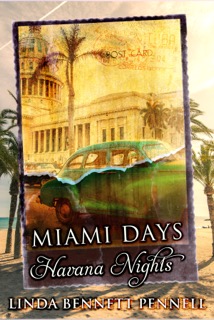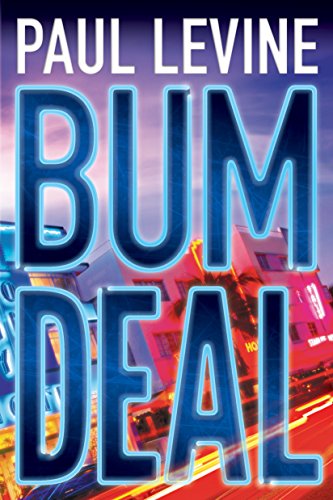My guest this week on The Scariest Part is Linda Bennett Pennell, whose new novel is Miami Days Havana Nights, a follow up to her novel Al Capone at the Blanche Hotel. Let’s hear what the scariest part was for Linda Bennett Pennell:
My fourth work of fiction, Miami Days Havana Nights, was released as an e-book through Amazon on July 18. The dual-timeline work of historical suspense and contemporary mystery features 1920’s-1960’s gangsters and a young, female history professor determined to suss out their secrets.
While there are certainly some exciting action scenes filled with tension scattered throughout both timelines, in my opinion the scariest part is something that readers might not initially consider frightening. It is not a murder or attempted murder, though several such take place over the course of the novel. It is not a natural cataclysm, though the deadly 1926 Miami hurricane blows through the early historical chapters. It is not the undertaking of a dangerous assignment that could have fatal consequences, though that type of action certainly occurs in both timelines. For me, the scariest part is something more subtle than blazing guns and howling winds.
The back cover blurb offers hints at my choice for “the scariest part”:
Sometimes our biggest debts have nothing to do with money.
1926. When seventeen-year-old Sam Ackerman witnesses a mob hit, he is hustled out of New York under the protection of Moshe Toblinsky, A.K.A., the mob’s bookkeeper. Arriving in Miami with no money, no friends, and no place to hide, Sam’s only choice is to do as the gangster demands. Forced into bootlegging, Sam’s misery is compounded when he falls in love. Amazingly, the beautiful, devout Rebecca wants only him, but he cannot give her the life she deserves. When Prohibition ends, Sam begs the mobster to set him free. The price? A debt, as Toblinsky puts it, of friendship. A debt that will one day come due.
Present Day. History of American Crime professor Liz Reams has it all — early success, a tantalizing lead on new info about Moshe Toblinsky, and a wonderful man to love. Life is perfect. So what’s keeping her from accepting her guy’s marriage proposals? Confronting a long-standing personal debt sets her on a journey of self-discovery. While she delves ever deeper into Sam’s and Toblinsky’s relationship, her understanding of her own relationships increases as well, but the revelations come at a price. The emotional and physical dangers of her dual journeys may prove too big to handle.
The idea of being indebted to a powerful gangster who controls the entirety of one’s adult life chills me to the core. It would have been a psychologically and emotionally claustrophobic way of living to never know when the debt would be called in or the nature of the repayment. For me, never knowing when the axe might fall would be an unbearable form of exquisite torture.
Miami Days Havana Nights: Amazon
Linda Bennett Pennell: Website / Facebook / Twitter / Pinterest / Newsletter Sign-up
Linda Bennett Pennell has been in love with the past for as long as she can remember. Anything with a history, whether shabby or majestic, recent or ancient, instantly draws her in. She supposes it comes from being part of a large extended family that spanned several generations. Long summer afternoons on her grandmother’s porch or winter evenings gathered around her fireplace were filled with stories both entertaining and poignant. Of course being set in the American South, those stories were also peopled by some very interesting characters, some of whom have found their way into her work.
As for her venture in writing, it has allowed her to reinvent herself. We humans are truly multifaceted creatures, but unfortunately we tend to sort and categorize each other into neat, easily understood packages that rarely reveal the whole person. Perhaps you, too, want to step out of the box in which you find yourself. She encourages you to look at the possibilities and imagine. Be filled with childlike wonder in your mental wanderings. Envision what might be, not simply what is. Let us never forget, all good fiction begins when someone says to her or himself, “Let’s pretend.”
She resides in the Houston area with one sweet husband and one adorable German Shorthaired Pointer who is quite certain she’s a little girl.
Her favorite quote regarding her professional passion: “History is filled with the sound of silken slippers going downstairs and wooden shoes coming up.” Voltaire





